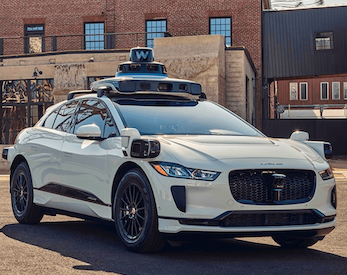
Fully autonomous cars are only a decade away















Published on 13 June 2024 by Andrew Owen (5 minutes)
This week I read an article in the national newspaper I subscribe to with the subhead: “carmakers appear to be abandoning the idea of fully self-driving cars.” It mentions that the recent French Open Tennis Championships offered a park-and-ride, fully autonomous bus service to and from the event. The bus was co-developed by Renault and WeRide, but the article quotes Renault spokesperson Christophe Lavauzelle as saying that the idea of fully autonomous vehicles other than buses that run along fixed routes was probably dead. The article questions how autonomous software would cope with being asked to share streets with existing human drivers. The answer is, it’s already happening right now in San Francisco and it’s doing just fine.
I know this because this week I also watched episode 149 of “The Carmudgeon Show” (sweary but informative) on YouTube. In it, Jason Cammisa and Derek Tam-Scott take an hour-long ride through San Francisco in the back of a fully autonomous Jaguar I-PACE. Technically, it’s not a level five vehicle (as defined by the Society of American Engineers) because the steering wheel is still connected. The company behind it, Waymo, is a subsidiary of Google parent company Alphabet. It has its origins in the Stanford Racing Team, Stanford University’s response to the DARPA Grand Challenge (the same DARPA that brought you the internet).
The DARPA challenge was to build a robot capable of navigating 175 miles through desert terrain in less than ten hours with no human intervention. Work began in July 2004. The team competed in 2005 and 2007. Google got involved in 2009 under the direction of former director of the Stanford Artificial Intelligence Laboratory Sebastian Thrun and Anthony Levandowski who went on to found autonomous truck company Otto in 2016 (later sold to Uber). The project became public knowledge in 2010 but it took another decade before Waymo became the first company to offer services to the public without safety drivers in the vehicle.
Various vehicles were used during development, and as late as 2018 hybrids were still part of the offering. But Waymo eventually decided to go exclusively with the I-PACE electric SUV. This was based partly on the relatively small exterior size of the vehicle, making it suitable for use in city driving, the luxury level (there’s a reason that Mercedes-Benz is known globally as a taxi brand), and availability. The company put in an order for 20,000 vehicles.
The system uses a combination of off-the-shelf central processing and graphics processing units, in-house neural network processors, cameras, radar and lidar. Passenger interaction is limited to a touch screen that enables you to start your journey, lock the car, have the car pull over or call for assistance. By January 2022 the fleet had covered 20 million miles on public roads.
There have been some minor accidents. And a dog got run over. However, in that instance, the animal ran out into the road from behind a parked vehicle. A human driver would also have killed the dog. The robot car applied full braking, but was unable to stop in time. Humans, even in life-or-death situations, rarely deploy more than 60% of the available braking force. This is why brake-by-wire was invented. When you rapidly request 60% braking force, braking assist will attempt to give you 100% braking force. But the robot has faster reactions.
Waymo isn’t the only robot car operator in San Francisco. There’s also Cruise, a subsidiary of General Motors. Those who are opposed to driverless cars on city streets tend to lump the two in together. When one robot car makes a mistake, all robot cars get the blame. But statistically, a robot driver, covering the same distance as a human driver, has fewer accidents. The cars never break the speed limit and, as you can see in the Carmudgeon video, are able to deal with human drivers doing stupid things.
So, will you be seeing robotaxis in your city any time soon? No. Because San Francisco is a snapshot of how life will be a decade in the future (quite possibly including all its social problems). But in 2034, robotaxis will be the norm in most major cities. But will your personal vehicle be self-driving? No. Because all the tech required to make self-driving work looks hideous, and the car you drive is as much a part of the image you project as the clothes you wear. But some of the tech will filter down to create safer vehicles, just brake-by-wire gave us brake assist.
Now for some quick housekeeping. You might have noticed the blog has been tech-light of late. This is because of various time pressures. After two years of writing a weekly blog without a break, it gets hard to maintain the pace. So this year I planned out the majority of articles in advance. A chunk of the content would be made up from completed versions of incomplete ideas from the previous incarnation of this website. And another chunk would be the Retro Spotlight series, mainly expansions of shorter articles I had previous published elsewhere. Well that series turned out to be a lot more work than I had expected. The original articles were way too short and not sufficiently diverse. The plan went out the window. I’m still trying to get in about one purely tech article a month. But I’ve got a lot going on right now, so no promises. Until things settle down, I’ll continue to draw on my archive. I always intended to showcase some other types of writing this year, but I know you’re mainly here for the tech insights and I’ll get back to more of that as soon as I can. In the meantime, thank you for your patience.